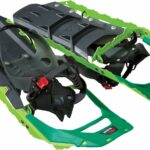Picture yourself cruising down the snowy slopes on a snowboard. Before you can get there, there’s a plethora of factors to consider when selecting your ideal board. One of those crucial elements is the waist width – the middle section of your snowboard. Understanding how to choose the proper waist width can enhance your performance and overall enjoyment. In this article, we’ll explore why the waist width matters, how it affects your ride, and how to appropriately select the right waist width for your snowboarding needs.
Understanding Snowboard Waist Width
Snowboarding can be daunting whether you’re a seasoned rider or a beginner. There’s a lot to consider, including gear, technique, and of course, your snowboard. One of the often-overlooked aspects of a snowboard is the waist width or the width of the snowboard at its narrowest point.
What is snowboard waist width?
Snowboard waist width refers to the measurement of the snowboard at the narrowest point in the middle, generally between where your boots would be when they’re mounted. This dimension is typically given in millimeters. It could be highly instrumental in determining how the board performs and how comfortable it is for you.
Role of waist width in snowboard performance
The waist width of your snowboard plays a significant role in how it handles turns, in particular. A narrow board will be more responsive and easier to turn, but it may also potentially cause toe and heel drag for riders with bigger feet. Conversely, a wider board can avoid this problem but may be slower to respond to changes in direction.
Determining snowboard waist width
The waist width you select for your snowboard typically depends primarily on your foot size. However, your weight, riding style, and the types of conditions in which you’ll be snowboarding also play a role.
Factors Influencing Snowboard Waist Width
Just like how every rider is different, each snowboard’s waist width can be different too, based on several factors. Let’s explore these:
Rider’s foot size
This is the main factor that affects the waist width of your snowboard. If you have larger feet, you’ll need a wider board to prevent your toes and heels from dragging in the snow as you ride.
Rider’s weight
The weight of the rider can also influence the ideal waist width. Simply put, heavier riders may benefit more from a wider board as it distributes weight better and provides more balance.
Rider’s riding style
Your riding style matters too. If you’re into freestyle or technical riding, you might prefer a narrower waist for a quicker response and easier spinning. If you prefer downhill or off-piste riding, a wider board for stability and floatation might be your preference.
Snowboarding terrain or conditions
The type of snow you’ll be riding on also plays a factor. For powder, you might want a wider board, while for icy conditions or groomed runs, a narrower board can offer better grip.
Importance of Snowboard Waist Width
Wondering why all the fuss about the waist width? Here’s why it’s crucial for your ride:
Effect on board speed
The waist width can directly impact the speed of your snowboard. With a narrower board, you can typically expect faster edge-to-edge transfers. Meanwhile, wider boards might slow you down a bit but offer better float in powder.
Influences on rider balance
A wider board will have more surface area, thereby providing potential for better balance. This can be especially beneficial for heavier riders or those riding in deep snow.
Impact on board handling and control
The width plays a role in the board’s handling and your control of it. Narrow boards are usually more responsive and easier to turn, although they can feel squirrely at high speeds. Wider boards require more effort to tilt onto edge but provide stability and control, especially at higher speeds.
Measuring Snowboard Waist Width
Everyone’s snowboarding needs are unique, and so, getting the right measurement of your snowboard’s waist width is vital.
Where to find the waist width measurement
You can usually find the waist width measurement on the specification sticker or the manufacturer’s website where the snowboard is sold. It’s generally listed in millimeters.
Tools to measure waist width
You can also measure the waist width yourself if necessary. Using a tape measure or ruler, measure across the narrowest part of the board to get a precise reading.
Professional evaluative methods
A professional board shop can also help you figure out the right waist width based on your shoe size, weight, and riding preferences. They can take foot measurements and consider other factors to make the best recommendation.
Snowboard Waist Widths for Different Foot Sizes
Every foot size will need a different snowboard fitting. Here’s a general guide:
Recommended waist widths for riders with small feet
If your boot size is below 7, you might want to look for narrow boards with a waist width between about 235mm-245mm. These boards will allow you to control your turns better.
Waist widths for medium foot size
Riders with a boot size around 7 to 10.5 should look for boards with a waist width somewhere between 246mm-260mm.
Ideal waist width for riders with large feet
Boarders with larger feet, typically size 11 and above, would get the most out of boards with wider waist width. Here, you should be looking for waist widths upwards of 260mm to prevent overhang and achieve better control.
Choosing the Right Snowboard Waist Width Based on Riding Style
Your riding style can heavily influence your choice of waist width.
Preferable waist widths for Freestyle riding
Freestyle snowboarding requires agility and quickness. This means you should go for a narrower waist width, allowing for faster edge transitions and easier maneuverability for tricks.
Desirable waist widths for All-mountain snowboarding
All-mountain snowboarding requires versatility, and thus, you may want a board with a medium waist width. It strikes a balance between response and stability.
Snowboard waist widths for Powder riders
Riding in powder demands floatation, and a snowboard with a wider waist can help in creating a larger surface area for better float.
Snowboard Waist Widths and Snow Conditions
The type of snow you plan on riding also influences your choice for a snowboard’s waist width.
Waist widths for light snow conditions
For light snow conditions, a narrower board can offer more edging power and quicker turning.
Waist Widths for heavy or slushy snow
In heavy or slushy snow, a slightly wider board will provide more stability and better float, making it easier to ride through the snow.
Snowboard waist widths for icy and hardpack conditions
Narrow boards work well on icy and hardpack conditions, as they can dig their edges into the snow better for more grip.
Common Mistakes Made in Choosing Snowboard Waist Width
Choosing the right waist width can be tricky, and it’s easy to make mistakes. Here are some common ones:
Choosing a board too wide or too narrow
Avoid the extremes. A board that’s too narrow can result in excessive toe and heel overhang, which can lead to trips and falls. A board that’s too wide, on the other hand, can be hard to handle and less responsive.
Ignoring foot size or weight
Your foot size and weight play significant roles in determining the waist width of your snowboard. Not taking these into account can lead to poor fit and performance.
Failing to consider personal riding style or snow conditions in selection
It’s essential to choose a board that suits your riding style and the typical conditions you ride in. For example, all-mountain riders would likely underperform with a narrow board designed for freestyle.
Adjusting to a New Snowboard Waist Width
If you’re adjusting to a new snowboard waist width, it might take a little time to get the hang of your new board.
How to adapt your riding to a wider board
A wider board generally means slower turns but better float in powder. You might need to amp up your lean to get the board onto its edge but you’ll also likely notice enhanced stability.
Tips for handling a narrower board
On a narrower board, your turns become snappier and the board is generally more responsive. Maintain control by centering your weight and practicing quicker edge-to-edge transfers.
Advice for transitions between snowboard waist widths
Take it slowly. Give yourself time to get accustomed to the new feel of the board. Remember, snowboarding is an art of balance and takes time to master.
Expert Tips for Selecting Snowboard Waist Width
Let’s round off with some expert advice you can consider when choosing your snowboard waist width:
Seeking professional advice
Professional help can often be beneficial, especially if you’re newer to snowboarding or meeting difficulty in identifying the best waist width.
Importance of personal trial and testing
It’s always good to test out a few boards if possible. This gives you a firsthand experience of how different waist widths feel and perform under your feet.
Factors to consider beyond manufacturer recommendations
Don’t rely solely on manufacturer recommendations when choosing your waist width. Consider your personal preferences, ability level, and the typical conditions you’ll be riding in.
All in all, snowboard waist width is an individual choice. Take your time to find the right fit, and you will certainly find a better snowboarding experience waiting for you. Happy riding!
- What Snowboard Bindings Should I Get? - January 23, 2024
- What Size Screws For Snowboard Bindings? - January 23, 2024
- How To Snowmobile On Water? - January 23, 2024









